An interesting petroglyph is circulating the internet. Apparently, it was discovered in the Khakassia region, Siberia and that it dates to 5,000 BC. In any case, what we see is here is an astrological imagery, and I will try here to decode each of its symbols, one by one.
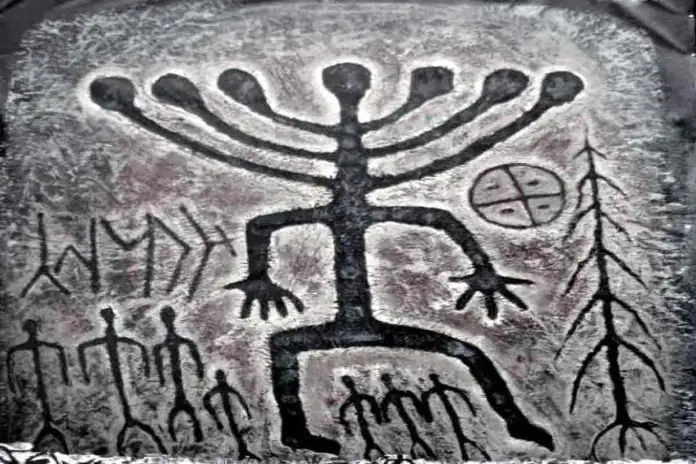
Khakassia petroglyph, 5000 BC
The world tree
The tree on the right represents the world tree or “Axis Mundi“. This is one the most common prehistorical symbols so I will not go deeper in explaining its meaning in order to save space for more interesting conclusions. See more on the highlighted links.
The seven heads
This is a much more interesting symbol, also present in many prehistorical cultures. My first association was the Hindu goddess Manasa who was depicted with seven cobras behind her head. (not that the symbolics of the world tree is missing either in the form of a pillar). Manasa was a fertility goddess, sometimes depicted with a child on her lap, just like Isis of the Egyptians, identified with the constellation Virgo.
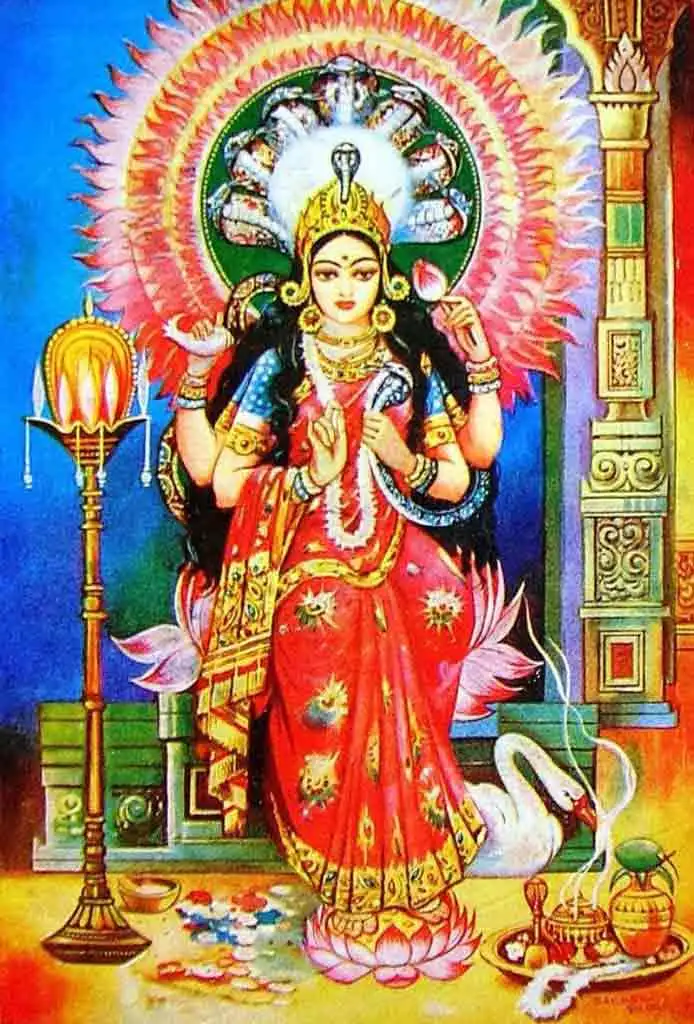
However, the fact is that seven-headed serpents appear all over the Indo-European world. Sometimes they are male and sometimes female. In Sumerian mythology, for example, there is a seven-headed serpent known as Mušmaḫḫū, which probably became a model for the Lernean Hydra, slain in the second labour of Heracles.
In Hinduism, many deities are fighting with multiheaded serpents – Indra, Krishna, and even Bhishma in Mahabharata attacked by many snakes of the river. But that is not too surprising, as the shared cultural influence between Mongolia, India, Iran and Ancient Greece is not disputable.

The name Hydra is related to water. And so were virtually all of the mythological snakes that we have mentioned so far. In Indo-European mythology, snakes and dragons were guardians of the water. A hero needs to conquer them to release the water and bring back fertility to the earth.
However, even though these similarities could relate to a common Indo-European heritage, this claim does not apply to the connections with the ancient cultures of Mesoamerica, at least not in the light of the current, mainstream history. Namely, there is a figure with seven serpent heads in ancient Mexico too. How to explain that one?
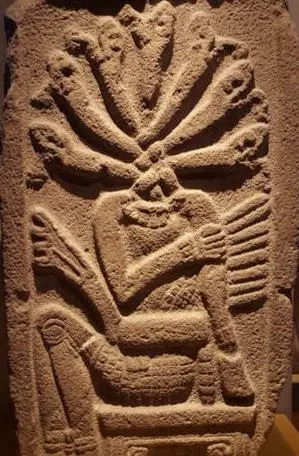
Snakehead figure deity, Aparicio, Veracruz, Mexico
The sun shield
Aztec goddess of fertility was Chicomecōātl – meaning seven snakes. She was a mother goddess who uses the sun as a shield. Note how her sun-shield looks precisely like the depiction of the sun on our petroglyph.
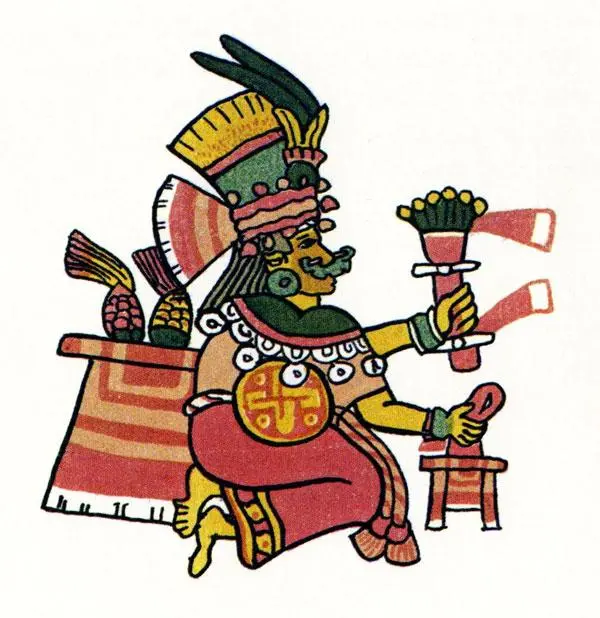
Chicomecōātl, an Aztec fertility goddess, with the sun shield and seven snakes
This prehistorical symbol had the same meaning in India, from the seals and beads of Indus valley civilisation to the tattoos of contemporary tribal women.
The goddess
Our petroglyph represents the goddess. If you wonder how do I know that, the answer is simple – because of the presence of the other human figures underneath her legs and on the side, and also because of the characteristical “birth goddess” leg pose.
The same pose, in the same context of childbirth, existed all over the world. We see it from the Paleolithic to the middle ages, but I will illustrate it here with one example from Neolithic China. I chose this image because, even though she doesn’t have seven heads, her head is in the shape of the same sun symbol.

Chicomecōātl as the constellation Virgo
And now we can draw some really interesting conclusions.
There are striking parallels between Chicomecōātl and Virgo constellation: Chicomecōātl holds ears of corn in her hand and sits on the seven-headed serpent. Virgo has shafts of wheat, and it is located right next to Hydra. The Sun shield represents the Sun passing through these constellations.
The summer solstice was in Cancer (with the head of Hydra behind) from roughly around 2500-500BC.
Now, this is too much of a coincidence, isn’t it?
Back to the sun shield symbol
Now, even though this symbol probably relates to the sun, you may wonder why it looks like a cross with four dots. The answer to this question may lie in another famous episode from the Hindu mythology – Samudra Manthan – the churning of the ocean.
In short, this episode depicts the creation of the universe. The benevolent and malevolent deities were using a snake god Vasuki (brother of above mentioned Manasa), to rotate the mountain (Axis Mundi) and churn the milk (Milky way) to create the nectar of immortality.
Constellation Hydra, stretching for over 100 degrees on the sky, was the longest constellation known to ancients. It is therefore not surprising that precisely the snake moves the Axis Mundi.
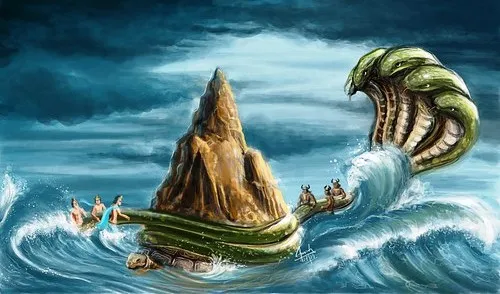
This event is commemorated in India in one of the most important festivals, known as Kumbh Mela. According to the legend, after churning was finished, the four drops of the nectar were spilt in four different places in India. Ever since that event, these four cities became pilgrimage sites for this religious festival. Each of the towns has its own date of celebration. These dates are not fixed. They depend on the positions of the Sun, Moon, and Jupiter (Indra).
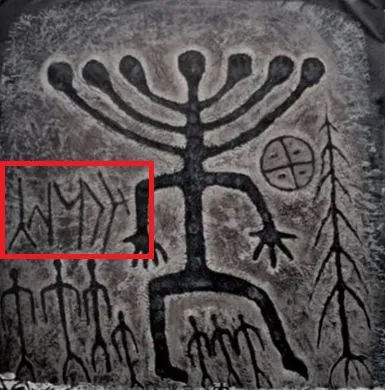
But if you look at the position of the Sun, you will see that it has to be in signs of Aries, Leo, Capricorn, and Libra (one for each city). These four constellations depict the celestial cross on the Zodiac, and in antiquity, they used to mark the four seasons. I believe that it is for this reason that our sun-shield symbol has the cross and four dots.





